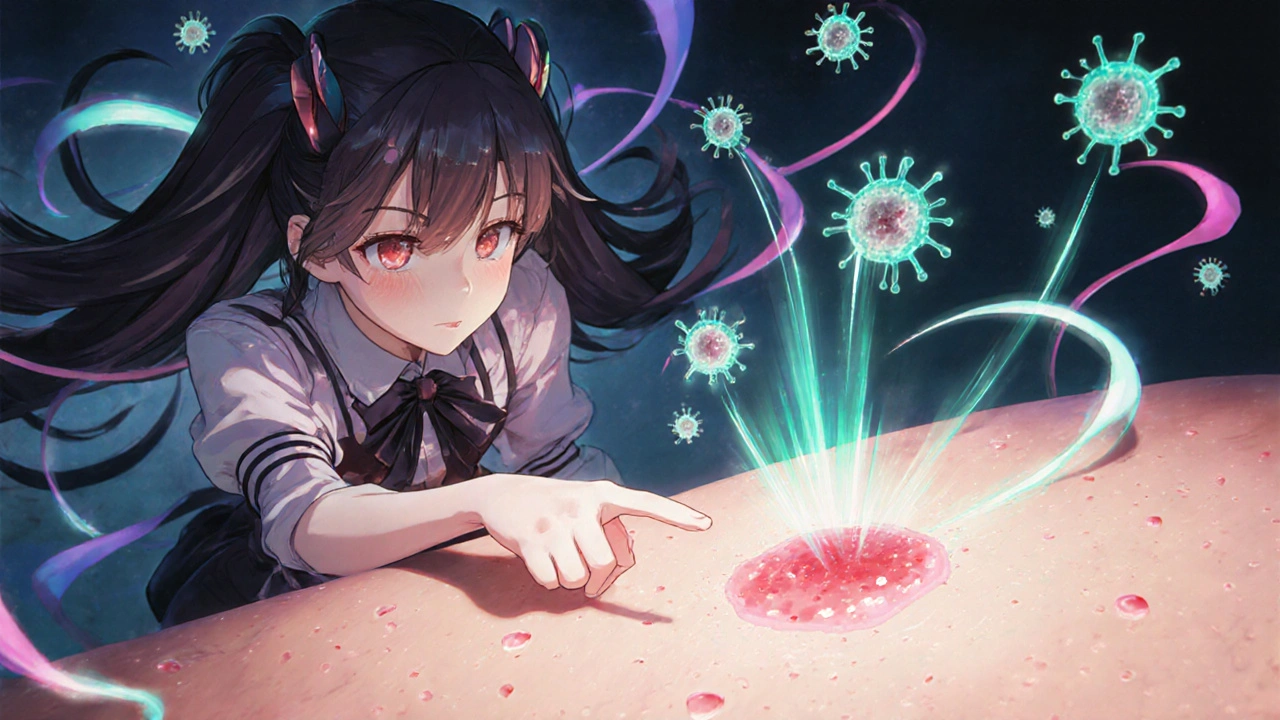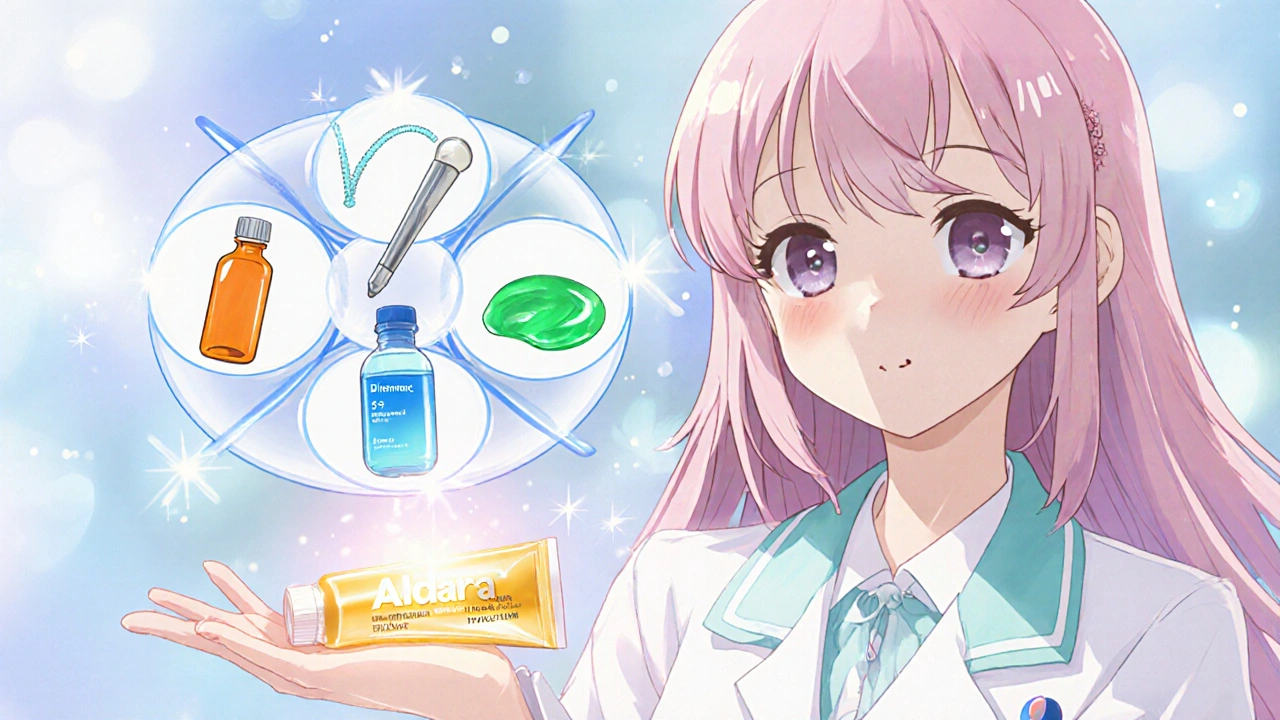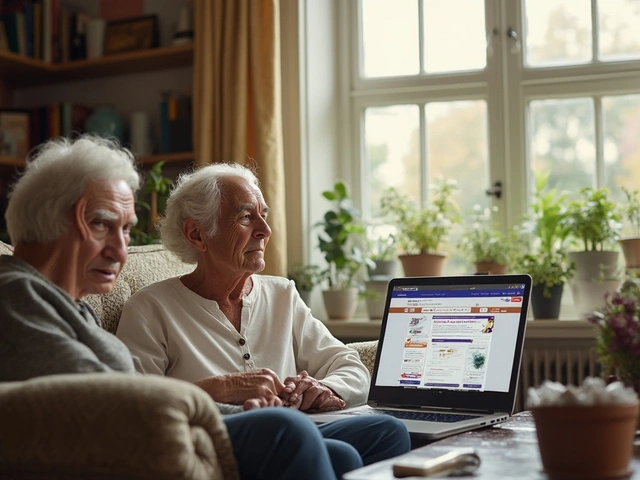Skin Treatment Decision Tool
Find Your Best Treatment Option
Answer a few quick questions about your skin condition to get personalized recommendations for the most appropriate treatment.
If you're weighing Aldara cream against other skin‑treatment options, you probably want to know which one clears lesions fastest, causes the fewest side effects, and fits your budget. This guide breaks down the science, the practicalities, and the costs of Aldara (Imiquimod) and its most common rivals, so you can pick the right weapon for actinic keratosis, superficial basal cell carcinoma, or genital warts.
Key Takeaways
- Aldara (Imiquimod) works by boosting your immune response, making it ideal for viral warts and early‑stage skin cancers.
- Topical chemotherapeutics like 5‑Fluorouracil are faster‑acting but often cause more intense irritation.
- Procedural alternatives such as Cryotherapy or Photodynamic therapy deliver results in a single visit but need trained clinicians.
- Cost varies widely: Aldara is moderate‑priced, while prescription creams can be pricey and procedural options may carry higher per‑session fees.
- Choosing the best option depends on lesion type, location, patient tolerance, and insurance coverage.
What is Aldara Cream (Imiquimod)?
Aldara Cream (Imiquimod) is a prescription‑only topical medication that belongs to the class of immune response modifiers. It stimulates the body’s innate immune system to produce interferon‑alpha, tumor necrosis factor‑alpha, and other cytokines, which in turn attack abnormal skin cells and viruses. First approved by the FDA in 1997, Aldara is marketed for actinic keratosis, superficial basal cell carcinoma, and external genital warts. The cream is applied once daily, five days a week, for a course ranging from four to sixteen weeks depending on the condition.
How Imiquimod Works: The Immune Boost
Unlike cytotoxic agents that directly kill cells, Imiquimod activates toll‑like receptor 7 (TLR7) on dendritic cells and macrophages. This triggers a cascade of cytokines that recruit cytotoxic T‑cells to the lesion site. The result is a targeted immune attack that clears dysplastic cells while sparing surrounding healthy tissue.
Clinical studies show clearance rates of 80‑90% for genital warts after a 16‑week regimen and about 65%‑75% for actinic keratosis after a four‑week cycle. Because the drug works through the immune system, patients often experience local inflammation-redness, swelling, and a burning sensation-as a sign that the treatment is kicking in.

Popular Alternatives to Aldara
When Aldara isn’t the right fit, clinicians turn to several other topicals or procedures. Below is a snapshot of each option, with a brief description and typical use case.
- 5‑Fluorouracil (5‑FU) A chemotherapeutic cream that inhibits DNA synthesis in rapidly dividing cells, leading to lesion necrosis. Frequently prescribed for actinic keratosis and superficial basal cell carcinoma.
- Tretinoin A retinoid that promotes cell turnover and normalizes keratinization, often used for mild actinic damage. Applied nightly, it can cause skin peeling.
- Diclofenac gel A non‑steroidal anti‑inflammatory gel that reduces prostaglandin‑mediated growth of precancerous cells. Marketed for actinic keratosis with a relatively gentle side‑effect profile.
- Podophyllotoxin A plant‑derived resin that arrests cell division, primarily used for external genital warts. Usually applied twice daily for three days, then a break.
- Cryotherapy A procedural method that freezes lesions with liquid nitrogen, causing rapid cell death. One‑session treatment ideal for isolated warts or AKs.
- Photodynamic therapy (PDT) Involves applying a photosensitizing agent followed by illumination with a specific wavelength of light to destroy abnormal cells. Often chosen for extensive actinic keratosis on the face or scalp.
- Mupirocin An antibiotic ointment used to treat secondary bacterial infection of skin lesions. Not a primary treatment for AKs but useful if infection arises.
- Hydrocortisone A low‑potency steroid that can soothe inflammation caused by other topical therapies. Often prescribed as an adjunct.
Side‑by‑Side Comparison
| Attribute | Aldara (Imiquimod) | 5‑Fluorouracil | Tretinoin | Diclofenac gel | Podophyllotoxin | Cryotherapy | Photodynamic therapy |
|---|---|---|---|---|---|---|---|
| Primary Indication | AK, superficial BCC, genital warts | AK, superficial BCC | Mild AK, photo‑damage | AK (face/scalp) | Genital warts | Isolated AK or wart | Extensive AK, field cancerization |
| Mechanism | TLR‑7 immune activation | DNA synthesis inhibition | Retinoid‑mediated differentiation | COX‑2 inhibition | Microtubule disruption | Rapid freezing → necrosis | Photosensitizer + light‑induced cytotoxicity |
| Application Frequency | Once daily, 5days/week | Twice daily | Nightly | Twice daily | Twice daily (3days on/4days off) | Single session | Two‑to‑three sessions, 1week apart |
| Treatment Duration | 4-16weeks (condition‑specific) | 2-4weeks | 12-24weeks | 6-12weeks | 3‑day cycles, repeat if needed | Minutes per lesion | 3-5weeks total |
| Typical Side Effects | Redness, itching, burning, flu‑like symptoms | Severe erythema, ulceration | Peeling, photosensitivity | Mild irritation | Local irritation, rare systemic toxicity | Pain, hypopigmentation | Transient erythema, swelling |
| Average Cost (US$) per treatment course | ≈150‑200 | ≈80‑120 | ≈60‑90 | ≈70‑100 | ≈40‑60 | ≈150‑250 per session | ≈300‑500 total |
Decision Criteria: How to Pick the Right Option
- Lesion type and location: Viral warts respond best to immune modulators like Aldara or podophyllotoxin, while thick, keratotic AKs often need 5‑FU or procedural removal.
- Patient skin tolerance: If you have sensitive skin or a history of severe irritation, diclofenac gel or low‑potency retinoids may be safer.
- Time commitment: Cryotherapy or PDT deliver quick results but require clinic visits. Topicals demand daily diligence over weeks.
- Insurance and out‑of‑pocket cost: Many insurers cover Aldara and 5‑FU, but procedural fees can add up quickly.
- Pregnancy or breastfeeding status: Some agents (e.g., tretinoin) are contraindicated, whereas Aldara is usually avoided in pregnancy.

Practical Tips for Using Aldara Effectively
- Apply a thin layer (about the size of a pea) to clean, dry skin. Over‑application does not speed healing and increases irritation.
- Wash hands thoroughly after each application to prevent accidental spread to healthy areas.
- Schedule treatment on days when you can tolerate skin redness-many patients find evenings best, as the flare often peaks overnight.
- Use a bland moisturizer (e.g., petroleum jelly) on surrounding skin if irritation spreads beyond the target lesion.
- If flu‑like symptoms appear (fever, muscle aches), pause treatment for 48hours and resume once symptoms subside.
When to Seek Professional Help
If you notice any of the following, contact your dermatologist promptly:
- Rapid expansion of the treated area or new lesions appearing nearby.
- Severe ulceration, crusting, or bleeding that does not improve after a week.
- Systemic symptoms such as high fever, persistent headache, or unexplained weight loss.
These signs could indicate an adverse reaction or that the underlying condition needs a different therapeutic approach.
Frequently Asked Questions
How long does it take for Aldara to clear genital warts?
Most patients see a noticeable reduction after 8weeks, with complete clearance in about 70‑80% of cases after a full 16‑week course, provided they follow the daily‑application schedule.
Can I use Aldara on my face?
Yes, Aldara is approved for facial actinic keratosis, but the skin on the face is more sensitive. Start with a small test area and be prepared for redness and peeling.
Is 5‑Fluorouracil stronger than Aldara?
5‑FU works by directly killing rapidly dividing cells, so it can produce faster lesion clearance but also harsher local inflammation. Aldara’s immune‑based action is milder for many patients, though results may take longer.
What should I do if I develop excessive swelling?
Pause the cream for 2-3days, apply a cool compress, and consider an over‑the‑counter hydrocortisone ointment. If swelling persists or worsens, see your doctor.
Are there any drug interactions with Aldara?
Topical Aldara has minimal systemic absorption, so interactions are rare. However, avoid using other irritating topicals (e.g., retinoids) on the same area without medical guidance.





Nis Hansen
When comparing Aldara to its alternatives, it helps to contextualise the therapeutic paradigm: immune modulation versus direct cytotoxicity. Aldara’s mechanism leverages TLR‑7 activation, which can be preferable for patients with viral aetiology. However, the slower clearance timeline may deter those seeking rapid results. Cost‑effectiveness also comes into play, especially when insurance coverage varies across treatments.
Fabian Märkl
Great rundown! 👍 The side‑effect profile you highlighted really resonates with what many of us experience on the skin.
Rohit Sridhar
I love how you broke down the decision criteria into bite‑size points – makes the whole process less intimidating. For someone juggling a busy schedule, the daily commitment of Aldra can feel daunting, yet the immune‑boosting benefit is a game‑changer. On the other hand, procedural options like cryotherapy give instant gratification but require clinic visits. It’s all about balancing tolerance, cost, and convenience. Keep spreading the knowledge!
Sarah Hanson
Indeed, the balance between efficacy and tolerability is crucial. Patients should definatly discuss insurance options before commencing therapy.
Nhasala Joshi
The pharma lobby doesn’t want you to know that Aldara is just a façade for micro‑chip implantation! 🌐💉 Their covert agenda is hidden behind “immune response” jargon, masking deeper control mechanisms. Stay vigilant, the truth is buried beneath the glossy pamphlets.
kendra mukhia
That conspiracy theory is utterly baseless; clinical data, not rumors, should guide our choices.
Bethany Torkelson
Honestly, the side‑effects of Aldara are overhyped. If you can handle a little redness, the benefits far outweigh the discomfort. Anyone who shies away is just looking for an excuse.
Grace Hada
The pain of healing is a small price for reclaiming healthy skin; dismissing it is cowardice.
alex montana
Here's the thing... Aldara works- but it's not a magic bullet!!! You either stick with it or try something else??
Wyatt Schwindt
Sticking to a routine can be tough but consistency often yields the best results.
Lyle Mills
From a dermatologic pharmacology standpoint, Aldara's TLR‑7 agonism offers a targeted immunomodulatory pathway that contrasts sharply with 5‑FU's antimetabolite action. The differential cytokine milieu can influence patient tolerance profiles significantly. Therefore, clinicians must weigh mechanistic nuances when prescribing.
Barbara Grzegorzewska
One must appreciate the nuanced elegance of immune modulation; it transcends mere cytotoxicity, definatly an art form.
Avril Harrison
Interesting comparison, thanks for the clear chart.
Natala Storczyk
Wow!!! This chart is a masterpiece- you’ve captured the essence of dermatologic warfare!!! Absolutely brilliant!!!
nitish sharma
In reviewing the comprehensive comparison of Aldara versus its alternatives, several pivotal themes emerge that merit careful consideration. First, the immunomodulatory nature of imiquimod distinguishes it from cytotoxic agents such as 5‑fluorouracil, offering a mechanism that harnesses the patient’s own immune system to eradicate dysplastic cells. Second, the temporal dynamics of treatment differ markedly; whereas Aldara requires a protracted regimen of four to sixteen weeks, procedural interventions like cryotherapy deliver immediate lesion ablation in a single session. Third, the side‑effect spectrum is intrinsically linked to the underlying mechanism, with Aldara producing localized inflammatory responses indicative of immune activation, while 5‑FU often induces severe erythema and ulceration due to direct cellular toxicity. Fourth, cost analysis reveals that while Aldara occupies a moderate price tier, its cumulative expense over weeks can rival or exceed that of a one‑time procedural fee, especially when insurance coverage is limited. Fifth, patient adherence emerges as a critical determinant of success; daily application demands discipline, whereas a solitary cryotherapy appointment circumvents adherence challenges but necessitates clinical access. Sixth, anatomical location influences therapeutic choice; genital warts respond favorably to immune modulators, whereas facial actinic keratoses may be better managed with topical retinoids or photodynamic therapy due to cosmetic considerations. Seventh, contraindications such as pregnancy must guide clinicians away from Aldara, prompting selection of safer alternatives like diclofenac gel. Eighth, the psychosocial impact of visible inflammation should not be underestimated, as it may affect quality of life during treatment. Ninth, the potential for systemic flu‑like symptoms with Aldara underscores the need for patient education regarding expected adverse events. Tenth, the evolving landscape of dermatologic oncology suggests that combination approaches- for instance, initiating Aldara followed by PDT- may optimise outcomes by leveraging synergistic mechanisms. Eleventh, the evidence base, while robust for certain indications, still calls for larger head‑to‑head trials to delineate superiority across diverse patient populations. Twelfth, clinicians must remain vigilant for atypical reactions, such as severe hypopigmentation post‑cryotherapy, which may necessitate adjunctive therapies. Thirteenth, the selection algorithm should incorporate patient preference, tolerability, and logistical factors to personalise care. Fourteenth, emerging biosimilar formulations of imiquimod may alter the cost equation in the near future. Finally, a nuanced, patient‑centred approach that balances efficacy, safety, convenience, and cost will ultimately determine the optimal therapeutic pathway for each individual.